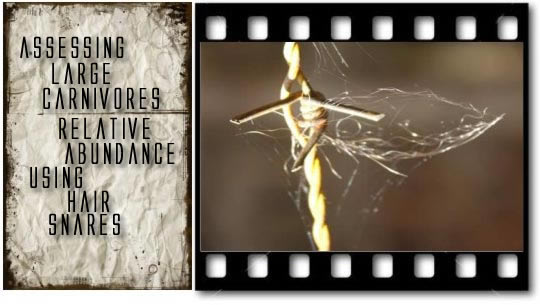|
| Assessing large carnivores relative abundance using hair snares |

|
It is a non-invasive method, through which genetic analyses can be made, using isolated AND form hair follicle in order to identify individuals and estimating populations. Hair traps are composed from metallic pieces (barb wire) that collect animal hair; these hair traps can be emplaced on trees, around the feeding sites etc.
For obtaining hair samples in an effective manner, the Putna – Vrancea Natural Park were divided in cells. The number and size of the cells differs, according to the size of the territory in which the sampling will be made, and with the average size of the territory for monitored bears with the help of radio telemetry. The sites are verified at least once a week, and the collected hair will be analysed using a microscope for determining the species.
|
|






